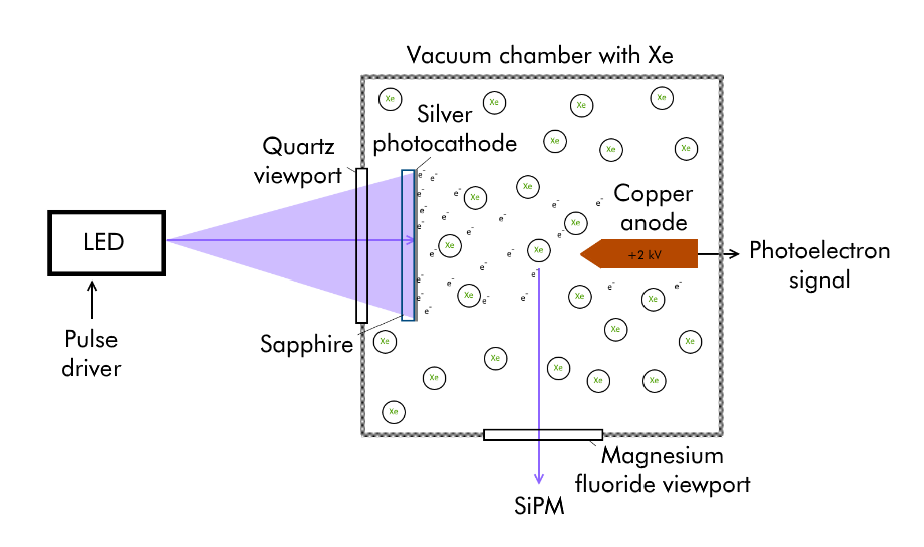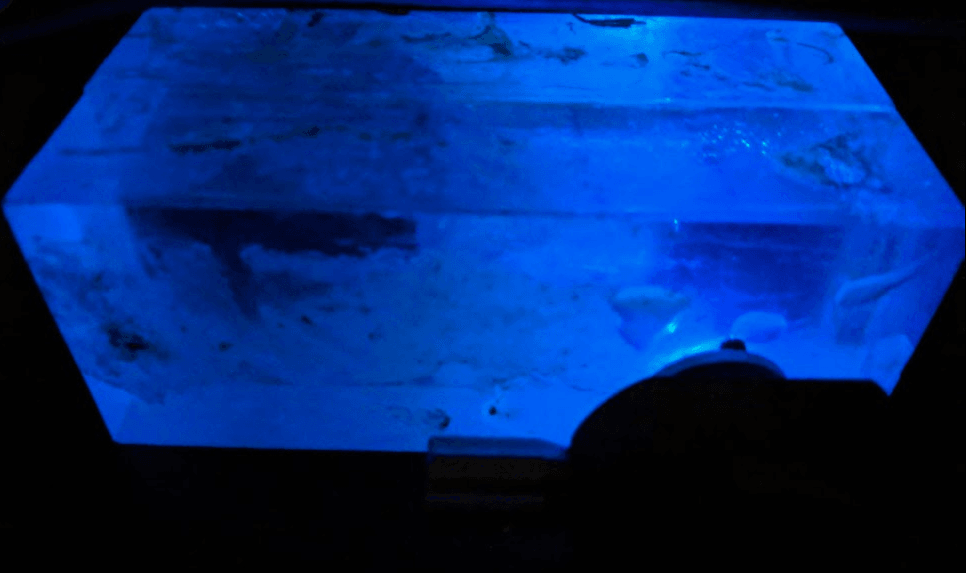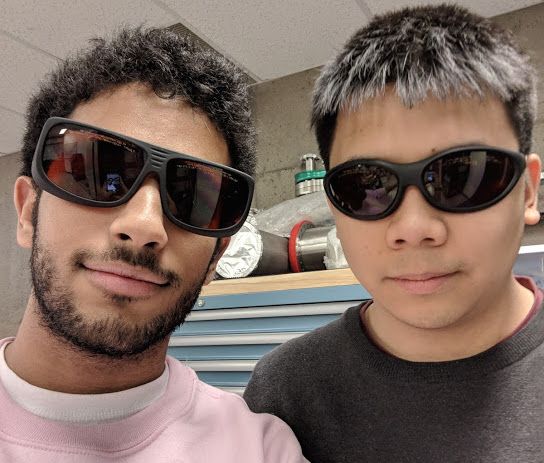

When energy is deposited in liquid Xe-136, it produces scintillation light at ~178 nm. This is what the photodectors in the nEXO time-projection chamber need to be sensitive to. To test and characterize potential photodetectors (SiPMs in our case), we developed an electroluminescent light source (ELS) that produces light at nearly the same wavelength as the scintillation light (you cannot buy an LED/laser that produces 178 nm light!).
We drift electrons through Xe gas from a silver cathode. As the electrons drift through the gas, they excite Xe atoms, these atoms then de-excite emitting electroluminescent light at ~172 nm. The electron bunches need to be controlled so that predictible and stable light output can be produced from the setup.
I worked on developing an avalanche transistor circuit to pulse a UV LED (265 nm) that shines ~10 ns pulses on the silver cathode producing the photoelectron bunches (see the circuit above).

Here we used the 265 nm LED (to the lower right side of the blue block) to pulse directly into a block of organic scintillator. The block is made of transparent, colourless plastic. When the invisible 265 nm UV light shines on it, the molecules in the block excite and de-excite (scintilate) emitting visible (blue) light out! This is similar to what we are doing with the Xe in the ELS and nEXO, except there electrons (and not higher energy photons) are depositing energy in the liquid Xe.

I learned a lot from this project, but one thing I took away was that I do not enjoy designing specialty electrical circuits.
